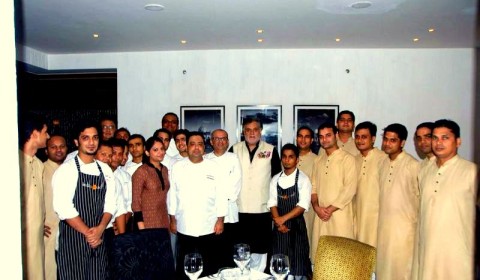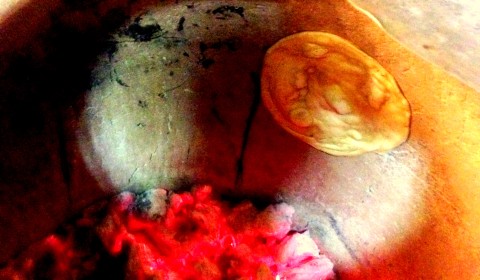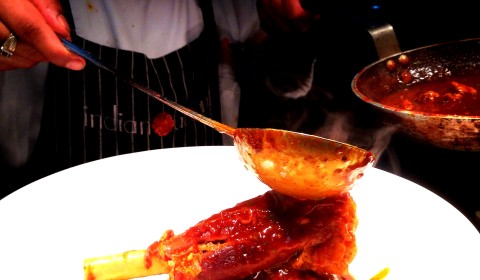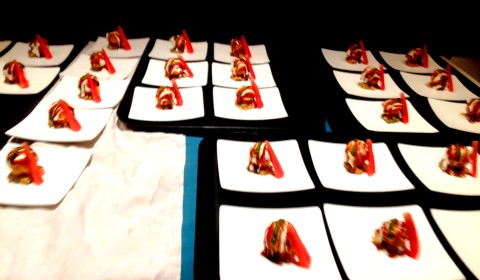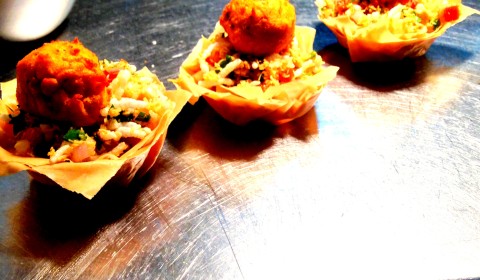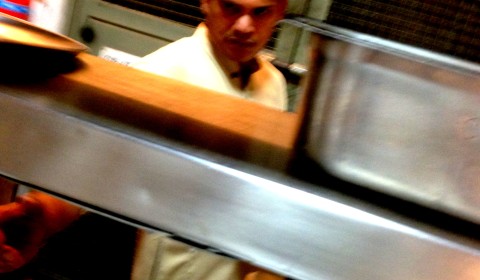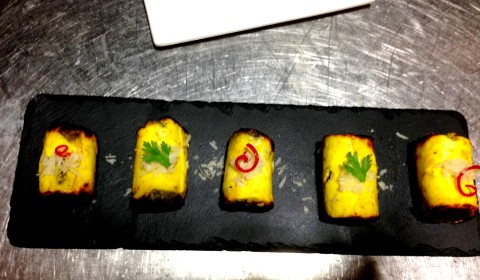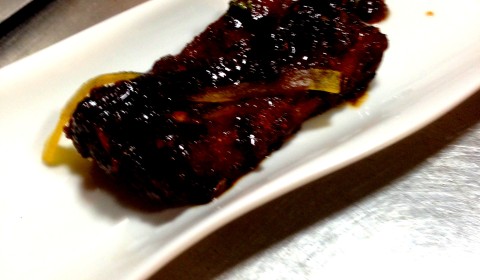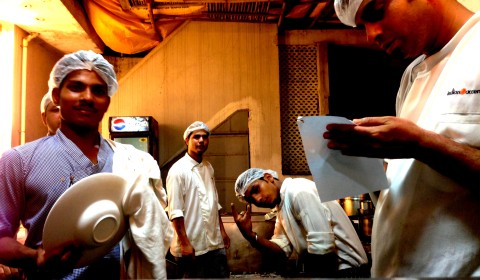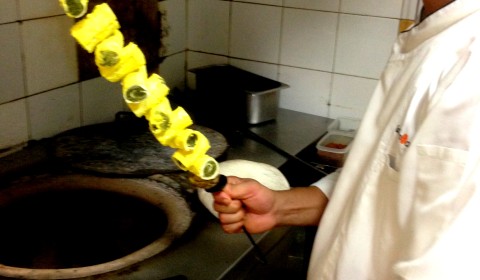“You either give everything you have or nothing at all, everything else in between is insignificant.”
These words were said by possibly the greatest chef in India. Manish Mehrotra, the Corporate Chef at Indian Accent Restaurant, New Delhi. His restaurant is the consistent recipient of numerous awards and honours, including the title of Number One restaurant in India (Time and Tripadvisor), third best in Asia (Tripadvisor) and 27th in Asia (Asia Top 50), among countless other accolades.
By a miraculous alignment of my stars, I landed my first chef-job here over two years ago, just out of college. Chef Manish took me under his wing and I have never looked back since, both as a professional and a person.
Today, my romance with the restaurant has ended; I am on to other things, enacting his vision of Indian cuisine as a culinary superpower, my way. This is a restaurant ahead of its time, a vision of a chef who was undeniably at the forefront of the gastronomic evolution of contemporary Indian cuisine.
But this isn’t about Indian Accent, the restaurant, at all. The official site does its job very well.
It’s about those who make the restaurant what it is.
India wasn’t a patch on the global arena of modern restaurants and gastronomy. This isn’t just my opinion. Indian cuisine isn’t likened to French or Italian cuisine in terms of restaurants and marketability, certainly not on the same scale. That is why aspiring chefs in India focus on international cuisine. I, too did the same, working at some of the finest Continental and Thai restaurants in Delhi, my home city.
I guess people my age prefer plating Masterchef-style fancy dishes and desserts as opposed to dumping curry in a bowl and making balls of gulaab jamun.
Sometime in 2012, I used to watch a cooking show where the premier chefs of India and Pakistan were judged on the basis of how creatively they presented their food. Everyone did the usual — made kebabs, curries, biryani and sweetened condensed milk.
One participant, however, produced dishes that would put the best continental restaurants to shame. This food was sophisticated, full of energy, visionary. It expressed one man’s passion in every way possible, staying true to his Indian roots. Not surprisingly, he won the competition by a landslide margin.
Also, not surprisingly, again, this was none other than Chef Manish. A man who went on to elevate Indian cuisine like never before. Tremendously inspired, I would from then on, shift all my focus to drawing from the strengths that lay in my own cultural heritage and cuisine, and dreamt of learning from close quarters some of the mastery and finesse I just witnessed.
Working under him became my dream.
I remember my first day. A professional kitchen is usually divided into various sections, each responsible for dispensing different dishes. I was put in the department that appealed to me the least: the dreaded tandoor section. A tandoor is a clay oven resembling a barrel, of sorts. Internal temperatures reach upto 600 degrees Celsius. Indian Accent is famous for its many exotic kulchas (stuffed breads) that are baked in a tandoor. Looks easy, but I assure you, it’s not. You’re supposed to dunk dough along the walls of this mind-numbingly hot thing with your bare hands. You take them out by meticulously maneuvering two oversized and very heated metal chopsticks. Take too long and your bread turns into a fireball, dropping into burning coal, never to be seen again. I worked in this section and, truth be told, to my own surprise, I actually quite enjoyed it. There’s a degree of showmanship involved when it comes to the tandoor. Although I burnt all the hair on my right arm in the process, this fiery contraption was always kind to me.
The same, however cannot be said about the Chef De Kitchen (CDC). I ate things that I could never dream of eating before. It was awe-inspiring, much to the glee of my perpetually hungry 21-year-old self. The CDC would go on to “screw” me over on a daily basis because of my insatiable appetite for our signature ribs and bacon kulcha which, as I came to understand later, was part of his job description as CDC. I liked and respected him deeply though; he taught me all about the benefits of smoking breaks during service, food cost-cutting and, most importantly, tough love.
I like to think he grew to like me too. Come to think of it, being a chain-smoking badass in the kitchen doesn’t make a good head chef better. Its about how one feels for your whining minions, especially when working in pressure-cooker conditions.
Come to think of it, Our CDC was perfect for the job.
I made many mistakes, obviously. The repercussions were always horrible, which meant I was terrified of making mistakes. This made me very efficient at what I did. I can honestly say this about every chef in that kitchen, one of whom is worth two chefs elsewhere. If you aren’t good enough, you wouldn’t make it a month there. We would do about 80 covers every night, serving long tasting menus, individually. My section alone would immaculately plate more than a hundred individual dishes every night (considering we only covered three courses in the tasting menu). Hours were long, which meant our social lives were pretty much nonexistent, but to a bunch of young lads like us, it was the ultimate adrenaline-junkie paradise. We would literally work hard and party harder, till we realized we had our shift the next day and had to show up in one piece…on time. We were, at the end, people living the fast life at a place which rewarded our hard work very handsomely.
It’s true: a chef makes the menu, the menu makes the restaurant. Equally true that none of this is possible without that chef’s loyal brigade. We would import and use high-end ingredients of the best possible quality, like foie gras and morels. The food is very conceptual, based on some long forgotten memory that made patrons relieve those moments. The tableware we used was world-class, adding an opulent yet understated dimension guests were immediately wooed by. Dishes were eclectic and simple, flavours were carefully balanced so as to not confuse the eater. It’s very difficult to classify them as regional. We used various ingredients but the combinations were unconventional yet genius. The presentation and crockery made the end product look quirky and original.
This is Indian food, or should I say, Manish Mehrotra’s version of Indian food.
The Tasting menu makes Indian Accent different from others. At this restaurant, a patron comes for the experience, not only the food. This style of dining is very new in India.
While working at Indian Accent, I played assistant/apprentice to a particularly interesting chef. He was there for a foodie event. I did not know who he was at the time, but we got along because we were both non-Bengalis from Calcutta. His name is Gaggan Anand, another Indian food revolutionary with possibly the best Indian Restaurant in the world, named after himself, in Bangkok. His restaurant only does tasting menus featuring Indian food. If I’m not wrong, I think Gaggan and Indian Accent are by far the best known restaurants to have done this.
This clip was shot for a news channel featuring Chef Manish, Gaggan and my outstretched arm.
Chef Manish is a very humble person. He deserves everything because he was brave enough to be the only fish to swim against the current at a time when everyone else was just dead weight. His intentions were honest and he worked very hard for something he believed in. As far as honours go, he has won every kind of recognition this country has to offer. If Michelin stars were awarded in India, he would win at least two. Awards notwithstanding, he invariably started a food revolution, the first of its kind in India. Two chefs whom he trained in the past went on to lead award-winning restaurants themselves — Masala Library in Mumbai and Farzi Cafe in Gurgaon. This just proves that people in this country really appreciate change. Chef Manish started this change, and with young starry-eyed chefs like me lining up for a job in his kitchen, this change is bound to happen soon.
This kind of Indian food is different. Indian Accent is all about him, it’s Manish Mehrotra’s own eccentric interpretation of Indian cuisine, with endless possibilities. These new places also have different dishes with variations depending on how talented and innovative the chef is.
Their roots will always be the same. This change can only be attributed to one person.
I am extremely grateful to have known, worked with, and learnt from this man, and I pray he exceeds the best of his potential.
I last saw him on the day I left for my culinary adventure. I hope I left on a good note, explaining that if I wasn’t being able to give my hundred per cent to my passion, I was wasting my time and his. Knowing him, I’m sure he would’ve done the same.
This article was about how my boss and his little brigade of foul-mouthed, sleep-deprived chefs turned a restaurant into nothing less than an institution. This site is dedicated to these people, my workmates, many of whom are now my dear friends. Officially, the most badass kitchen brigade in the country. Very soon, Indian Accent will grow to be bigger than it already is. When that day comes, I would like to hope that I played a small role in helping my sensei take humble old Indian food to dazzling new heights.
